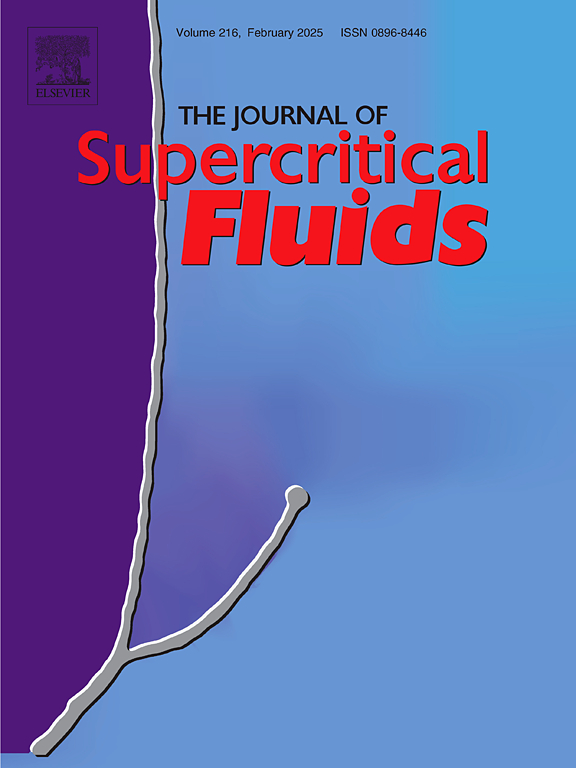Numerical study on flow and heat transfer characteristics of supercritical methane in microchannels with airfoil fins
IF 4.4
3区 工程技术
Q2 CHEMISTRY, PHYSICAL
引用次数: 0
Abstract
In order to study the thermal and flow properties of interstage coolers in the liquefaction of methane process, numerical analyses were carried out on methane flow within a printed circuit heat exchanger (PCHE) with airfoil fins. A geometry model was developed in this research to include staggered microchannels with airfoil fins. The SST k-ω turbulence model was utilized in the analysis of how various operating parameters, including inlet flux, outlet pressure and inlet temperature, impact flow and thermal characteristics. It was found that higher inlet temperatures result in improved thermal feature but are also associated with increased resistance. Conversely, higher outlet pressure conditions led to better overall flow and thermal feature. Furthermore, the impact of airfoil fins on flow characteristics was studied, considering factors such as secondary flow intensity and entropy generation. Correlations for Fanning frictional factor and Nusselt number were developed with a margin of error within ± 3.5 %. These research findings are intended to benefit the design and optimization of PCHEs featuring airfoil fins microchannels for applications.
超临界甲烷在翼型微通道内流动与换热特性的数值研究
为了研究甲烷液化过程中级间冷却器的热特性和流动特性,对带翼型翅片的印刷电路换热器(PCHE)内的甲烷流动进行了数值分析。在这项研究中,开发了一个几何模型,包括交错的微通道与翼型鳍。利用SST k-ω湍流模型分析了不同的运行参数,包括进口流量、出口压力和进口温度、冲击流量和热特性。研究发现,较高的进口温度会改善热特性,但也会增加阻力。反之,出口压力越高,整体流量和热特性越好。考虑二次流强度和熵产等因素,研究了翼型尾翼对流动特性的影响。范宁摩擦系数与努塞尔数的相关性,误差范围在± 3.5 %。这些研究成果旨在为具有翼型翼型微通道的pch的设计和优化提供参考。
本文章由计算机程序翻译,如有差异,请以英文原文为准。
求助全文
约1分钟内获得全文
求助全文
来源期刊

Journal of Supercritical Fluids
工程技术-工程:化工
CiteScore
7.60
自引率
10.30%
发文量
236
审稿时长
56 days
期刊介绍:
The Journal of Supercritical Fluids is an international journal devoted to the fundamental and applied aspects of supercritical fluids and processes. Its aim is to provide a focused platform for academic and industrial researchers to report their findings and to have ready access to the advances in this rapidly growing field. Its coverage is multidisciplinary and includes both basic and applied topics.
Thermodynamics and phase equilibria, reaction kinetics and rate processes, thermal and transport properties, and all topics related to processing such as separations (extraction, fractionation, purification, chromatography) nucleation and impregnation are within the scope. Accounts of specific engineering applications such as those encountered in food, fuel, natural products, minerals, pharmaceuticals and polymer industries are included. Topics related to high pressure equipment design, analytical techniques, sensors, and process control methodologies are also within the scope of the journal.
 求助内容:
求助内容: 应助结果提醒方式:
应助结果提醒方式:


